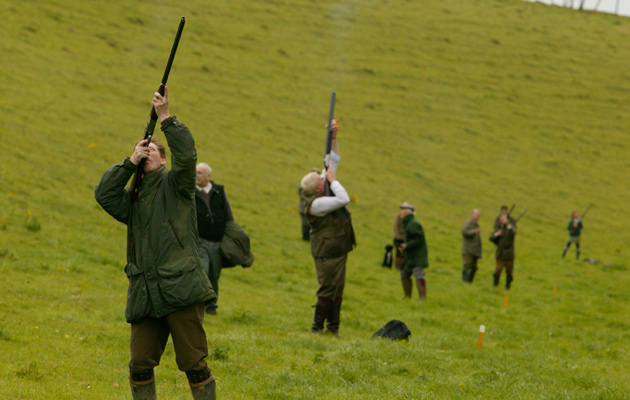Shoots must focus to make profit, survey says
Survey shows increases in costs are leading to losses for majority of let shoots, but bookings are up this season

Only those shoots which “focus hard on cost control will see a profit at the end of the season”, according to the results of Smiths Gore’s latest shoot benchmarking survey. The analysis by the rural property advisors reveals that more than half of let shoots are operating at a loss, but the news isn’t all bad: the losses are smaller than two years ago, bookings are up for the coming season and most operators are optimistic for the future.
The report, produced in conjunction with the Game & Wildlife Conservation Trust, was compiled on the basis of data submitted by 100 shoots and covers 1,800 shoot days, 160 full-time staff and more than 800,000 birds. It included both let shoots — which let more than a third of their days — and private shoots — at which fewer than a third of shoot days are let to the public each season.
The survey found that as a result of increased costs, shoots are having to increase charges per bird “to sustain their net income rather than to realise profit”. It breaks down costs into variable — largely birds, feed, and beaters and pickers-up — and fixed — mainly staff salaries, income foregone as housing not let, rent to third parties for land or sporting rights and vehicle and trailer costs. Both have increased since Smith Gore’s last benchmarking report, which covered the 2011 to 2012 season.
Variable costs are up by 50p per bird put down to an average of £8.57 largely as a result of the rising price of feed for the birds, hospitality for guests and inflation. Wages paid to beaters and pickers-up have also risen slightly to £28 and £31 a day, with let shoots tending to pay more than private shoots. Average fixed costs have risen by slightly more — 67p — to £5.34, most of which is due to an increase in staff salaries, which make up more than half of fixed costs, and income foregone as housing not let.
These cost increases are reflected in higher charges per bird on let days for the 2013 to 2014 season, which have risen by £2 for both pheasants and partridges to averages of £34 (pheasants) and £33 (partridges). Private shoots charged on average £1 less per pheasant and £2 less per partridge than let shoots. Higher costs are also being felt in overage and underage policies. Fewer shoots are offering five to 10 per cent leeway — 56 per cent did so in 2011 to 2012 compared with only 48 per cent last season.
Total costs per bird put down have increased by more than net charges per bird — 11 per cent compared with six per cent. When this is combined with return rates (37 per cent for let shoots and 43 per cent for private shoots) it results in an overall loss for 59 per cent of let shoots.
The survey also looked at shoots’ environmental management, finding that more than two-thirds of participants shot over land forming part of paid agri-environment habitat improvement schemes and almost half paid for habitat improvement to benefit the shoot. In addition, more than two-thirds of shoots have established buffer strips or field corners and wild-bird seed- mix areas, with almost 50 per cent having established wildlife margins or conservation headlands. Nearly two-thirds of shoots have planted woodland in the past 10 years and 79 per cent have managed woodland in the same period.
Looking to the future, almost a third of shoots feel optimistic about the 2014 to 2015 season and confirmed bookings on let shoots are up. Eleven per cent of shoots are putting more birds down, and the same number are putting down fewer birds. A net balance of 31 per cent of let shoots are planning to increase charges per bird, which is a smaller proportion than in previous years.
To read the full report, visit http://po.st/SGbench.








